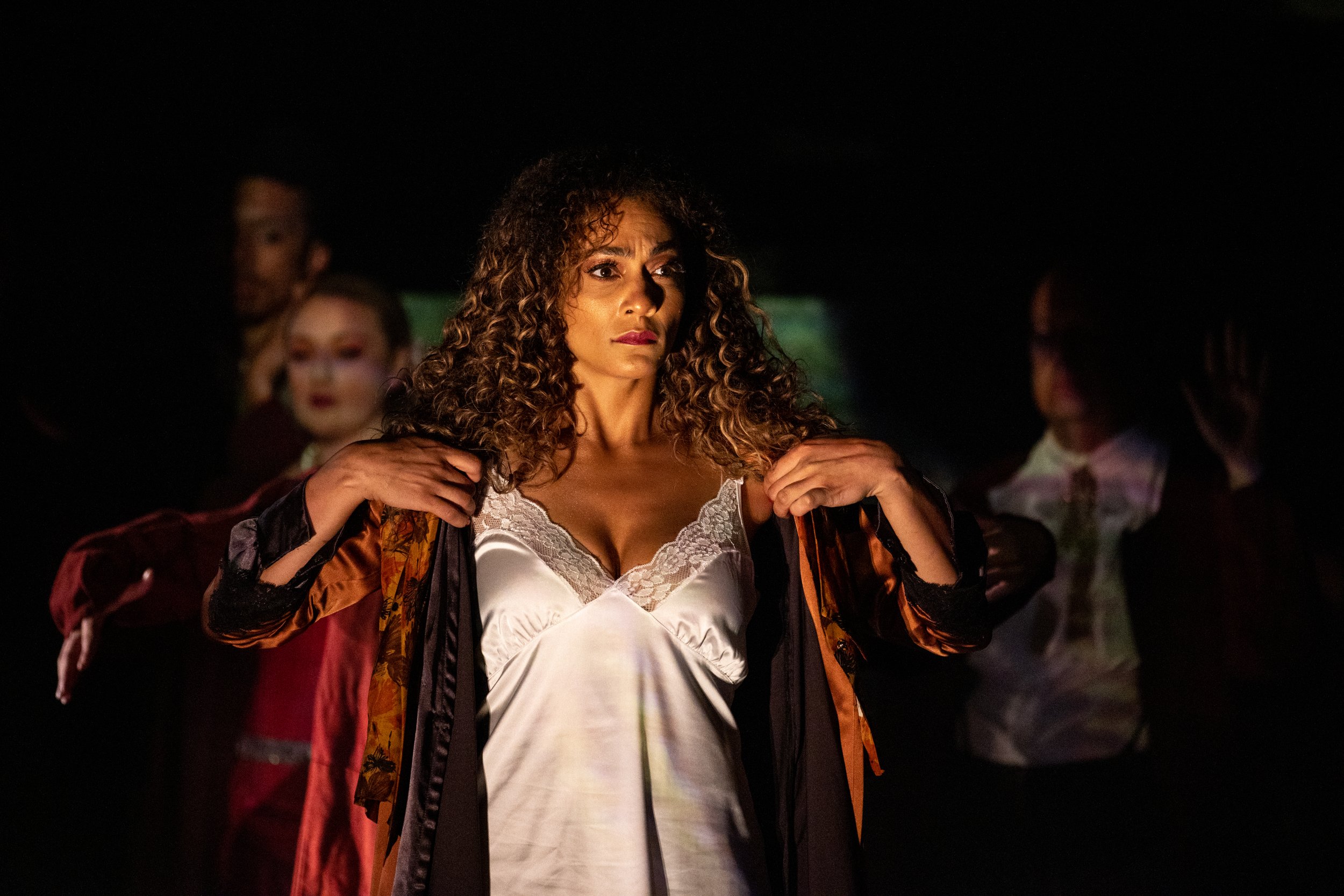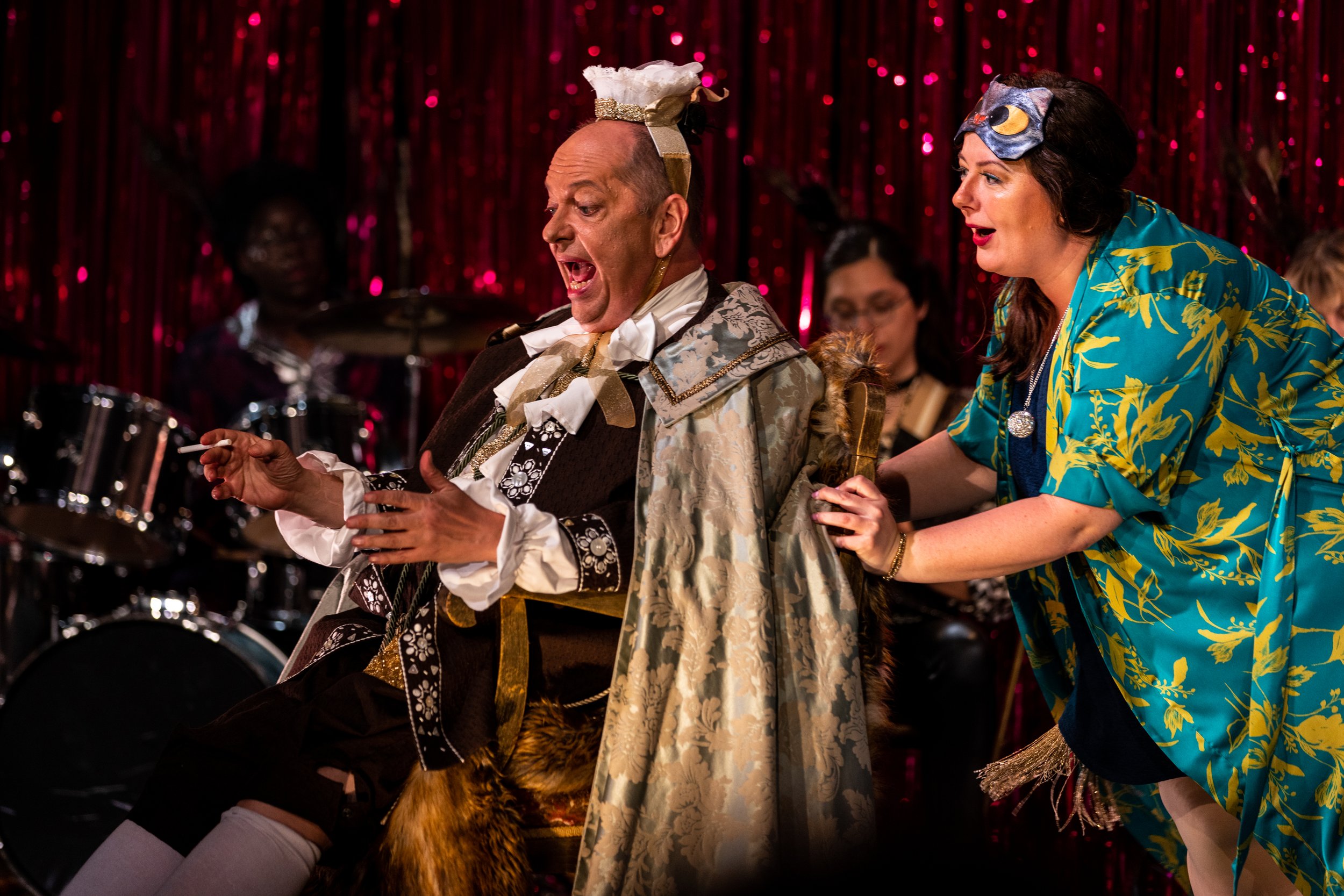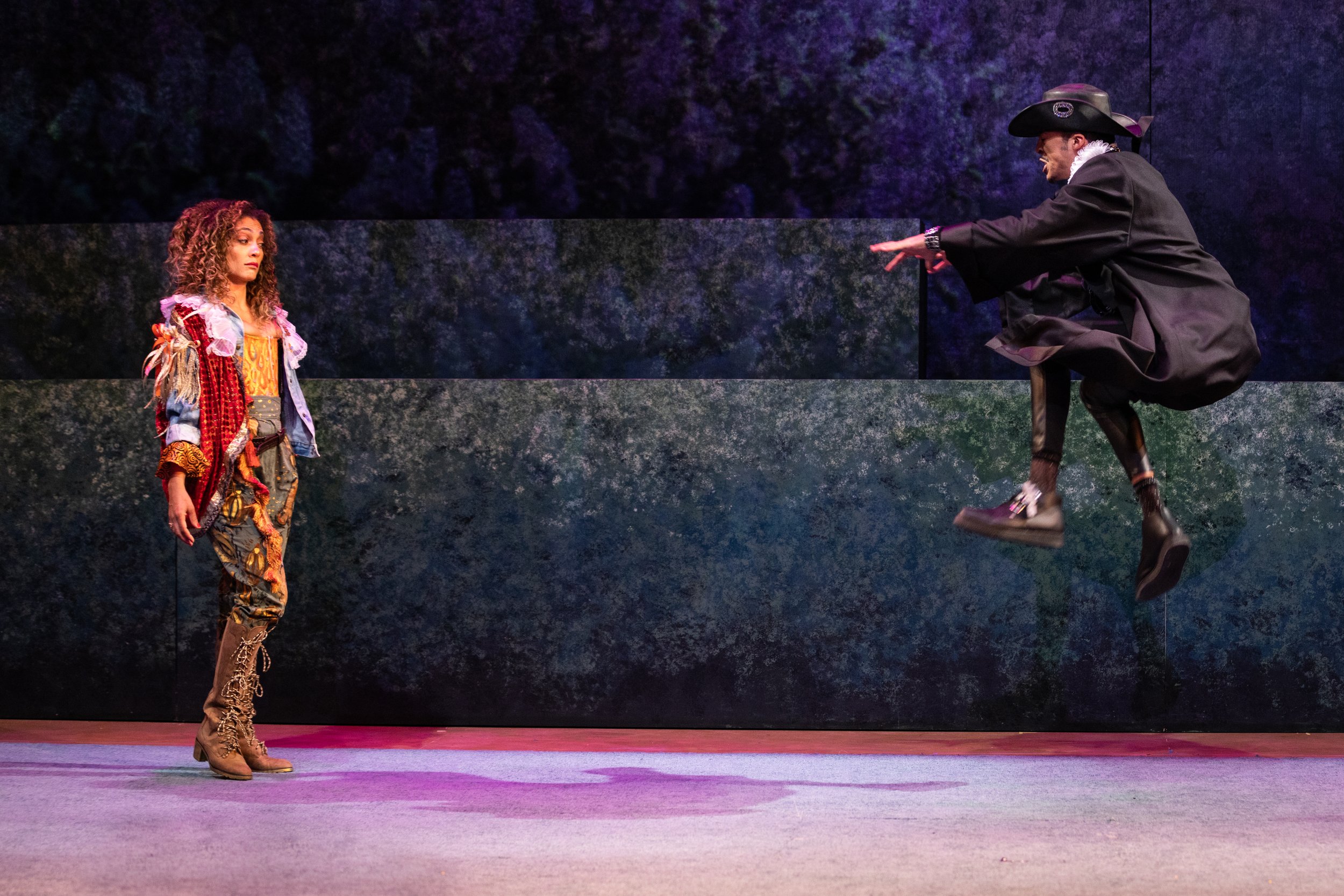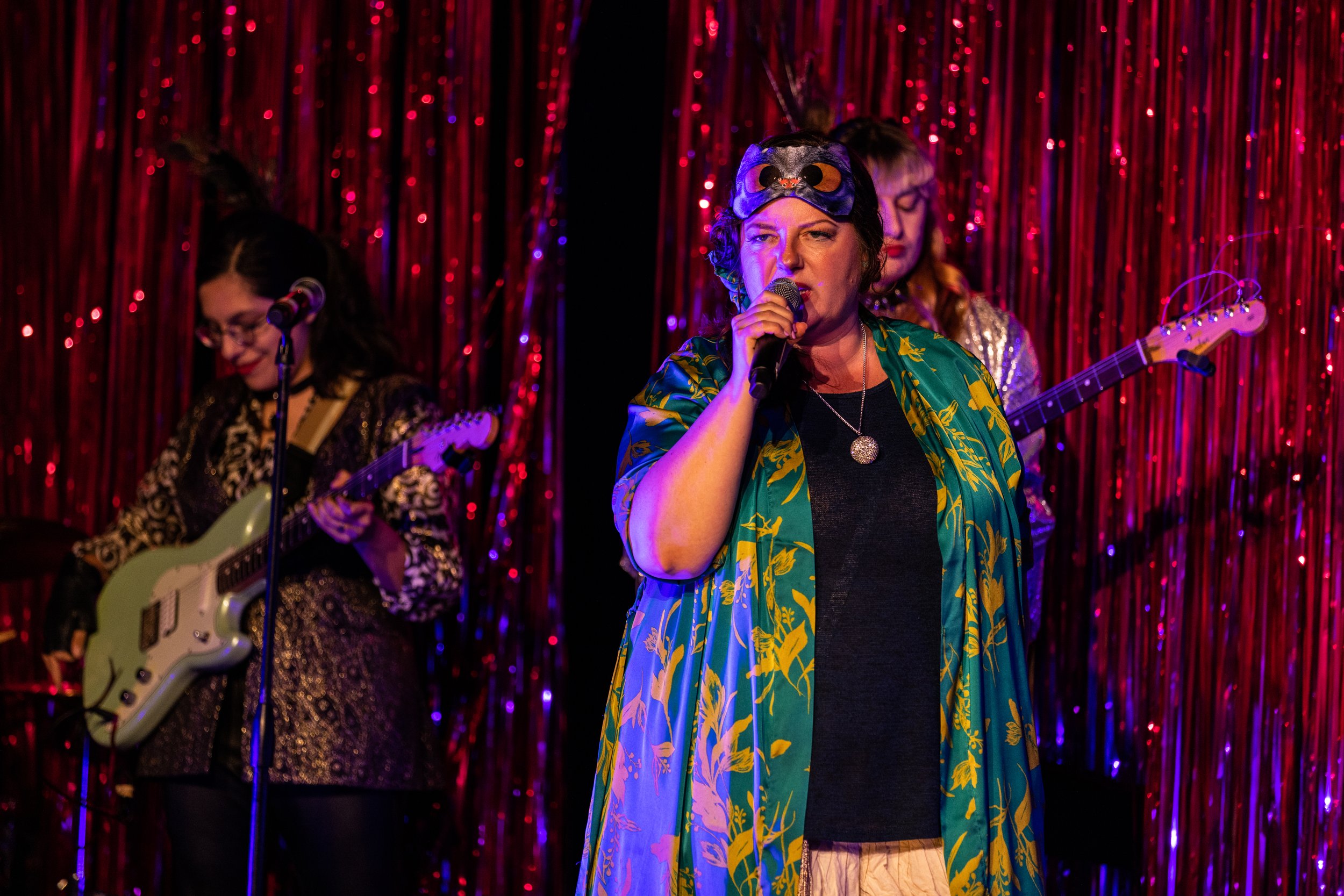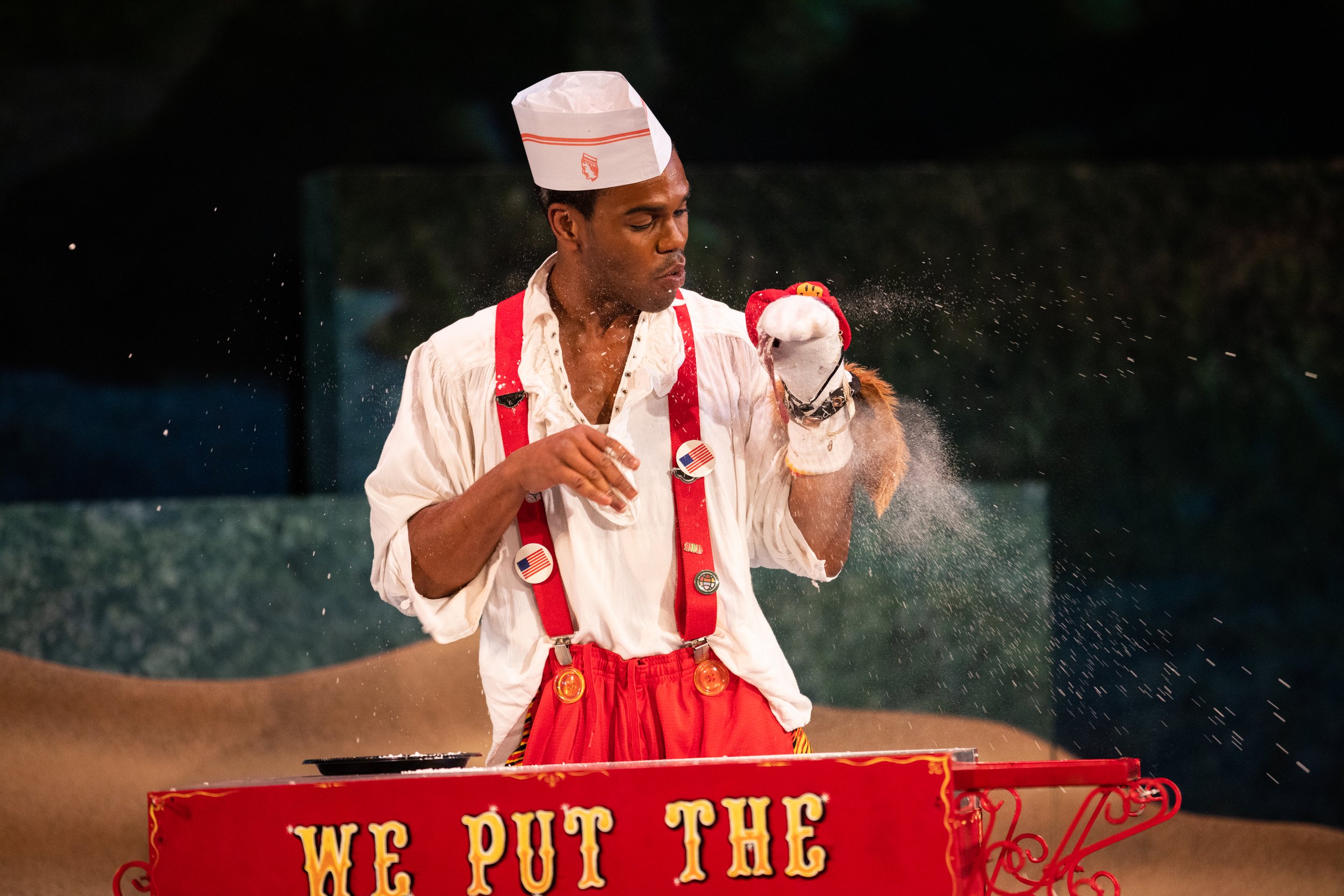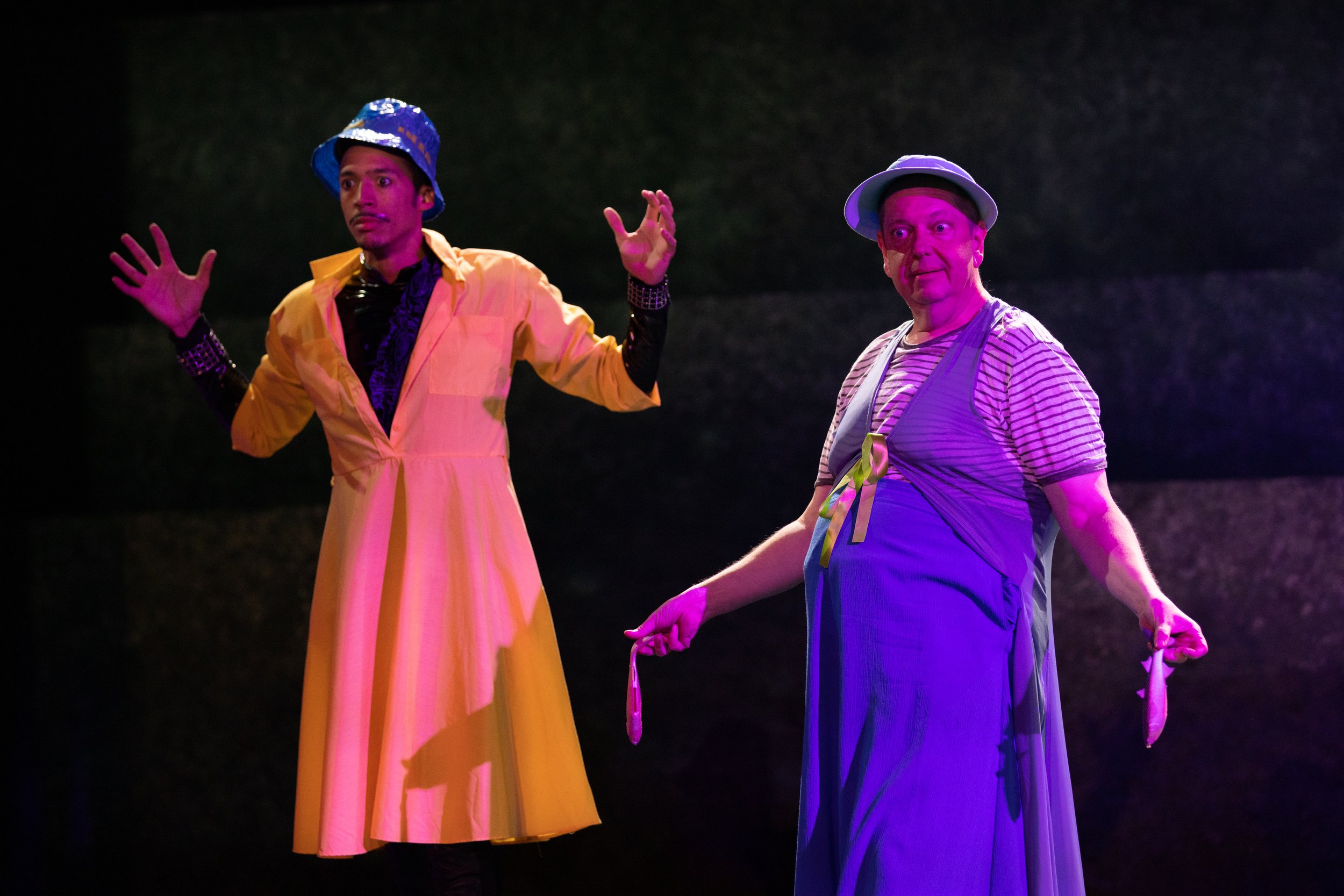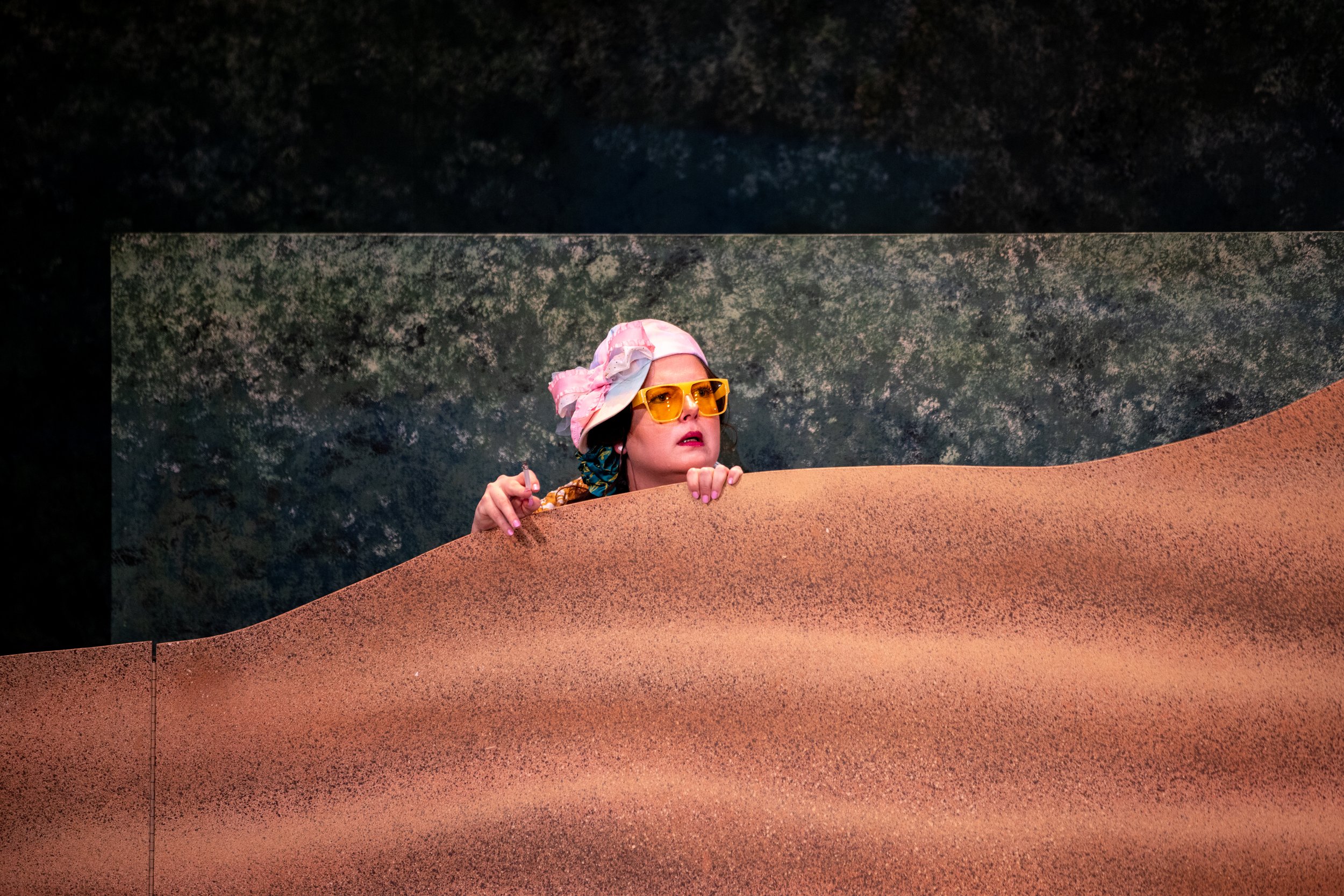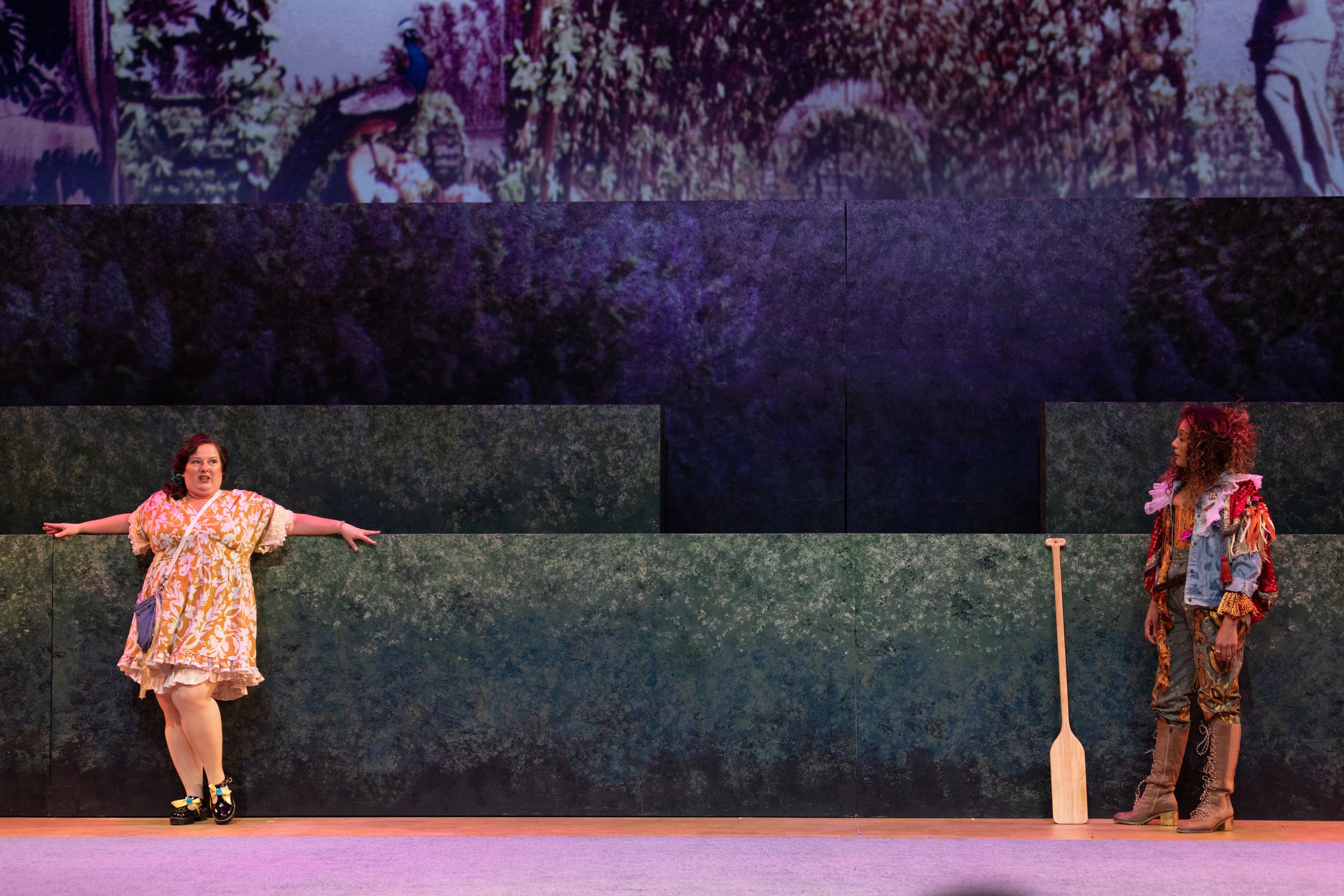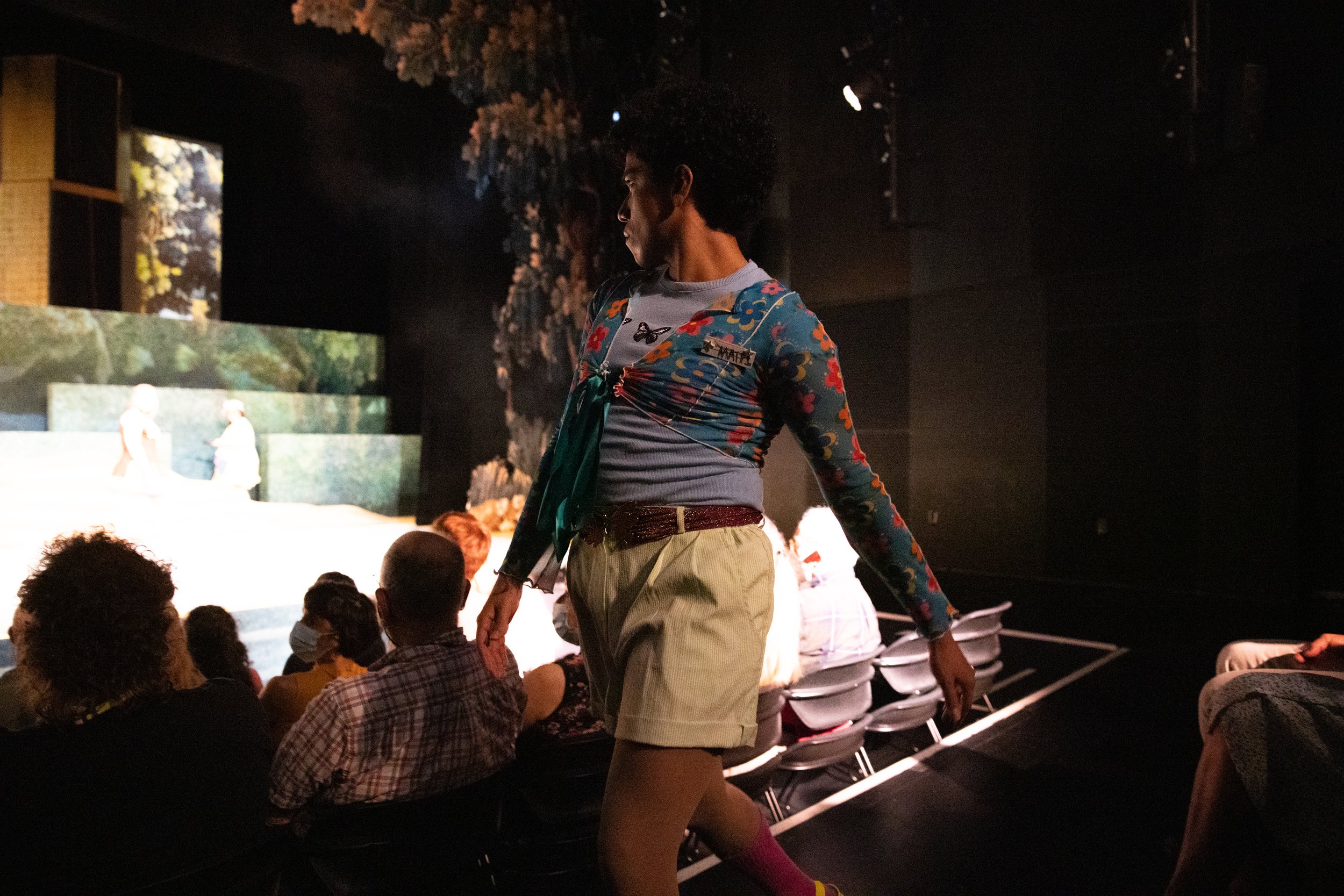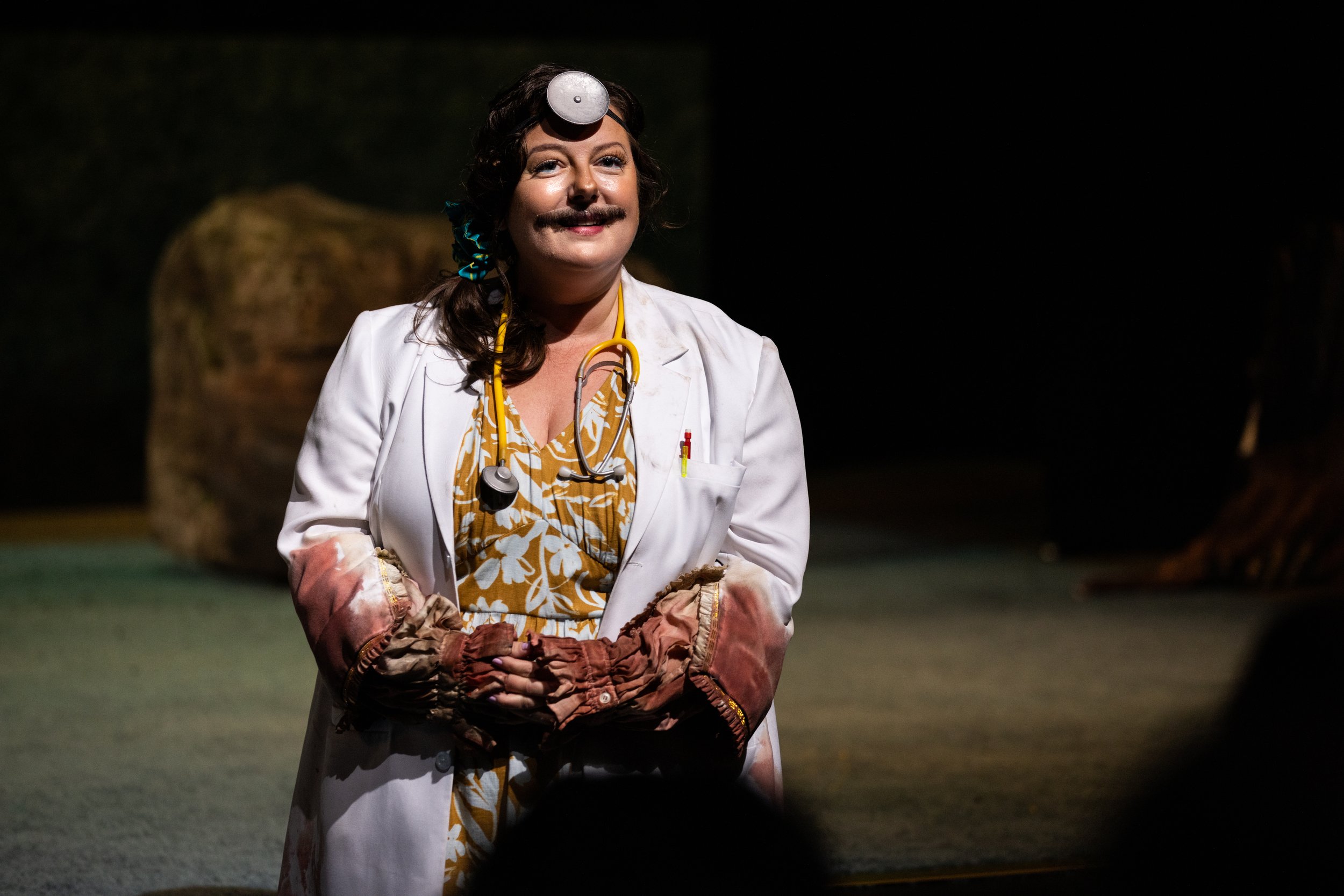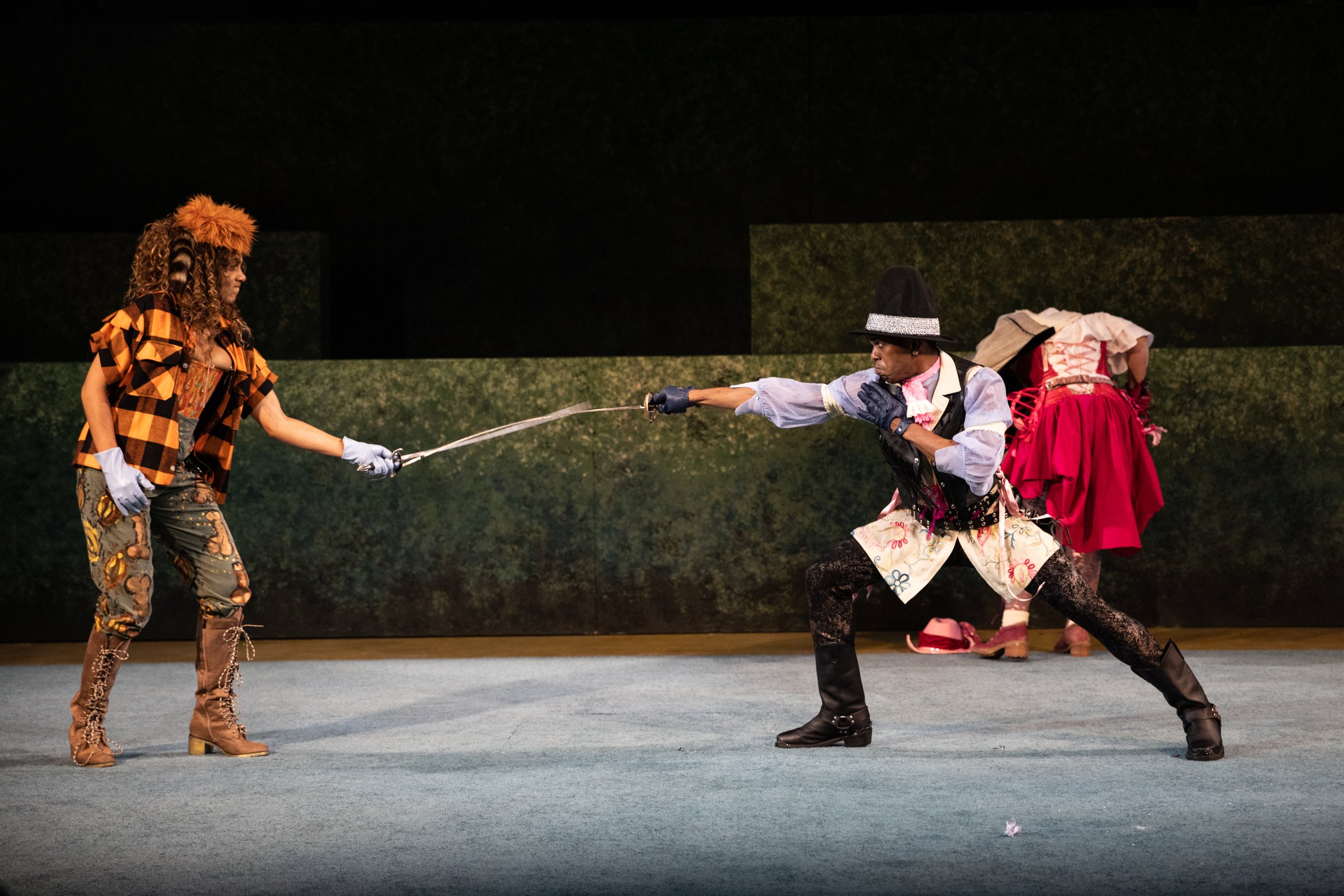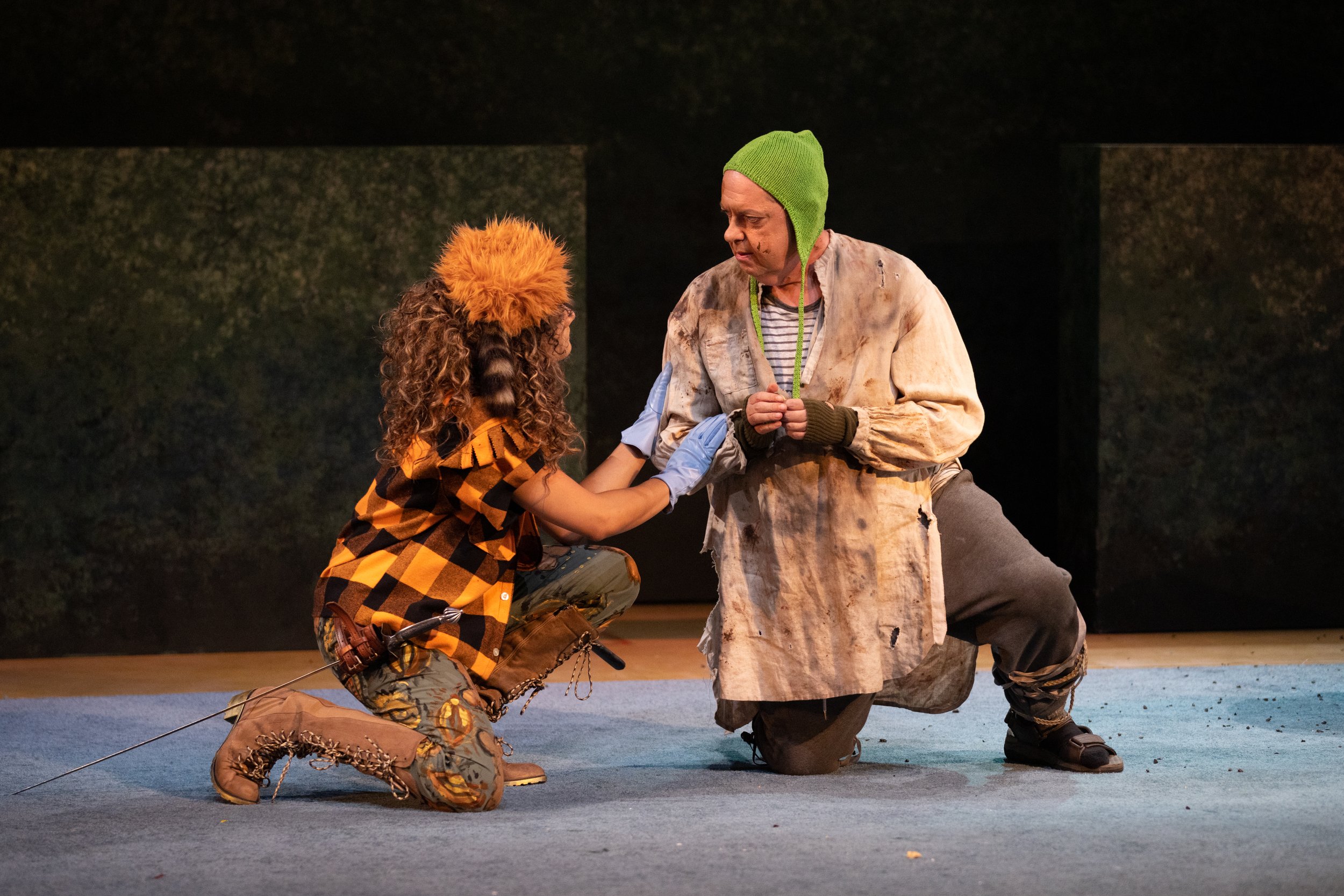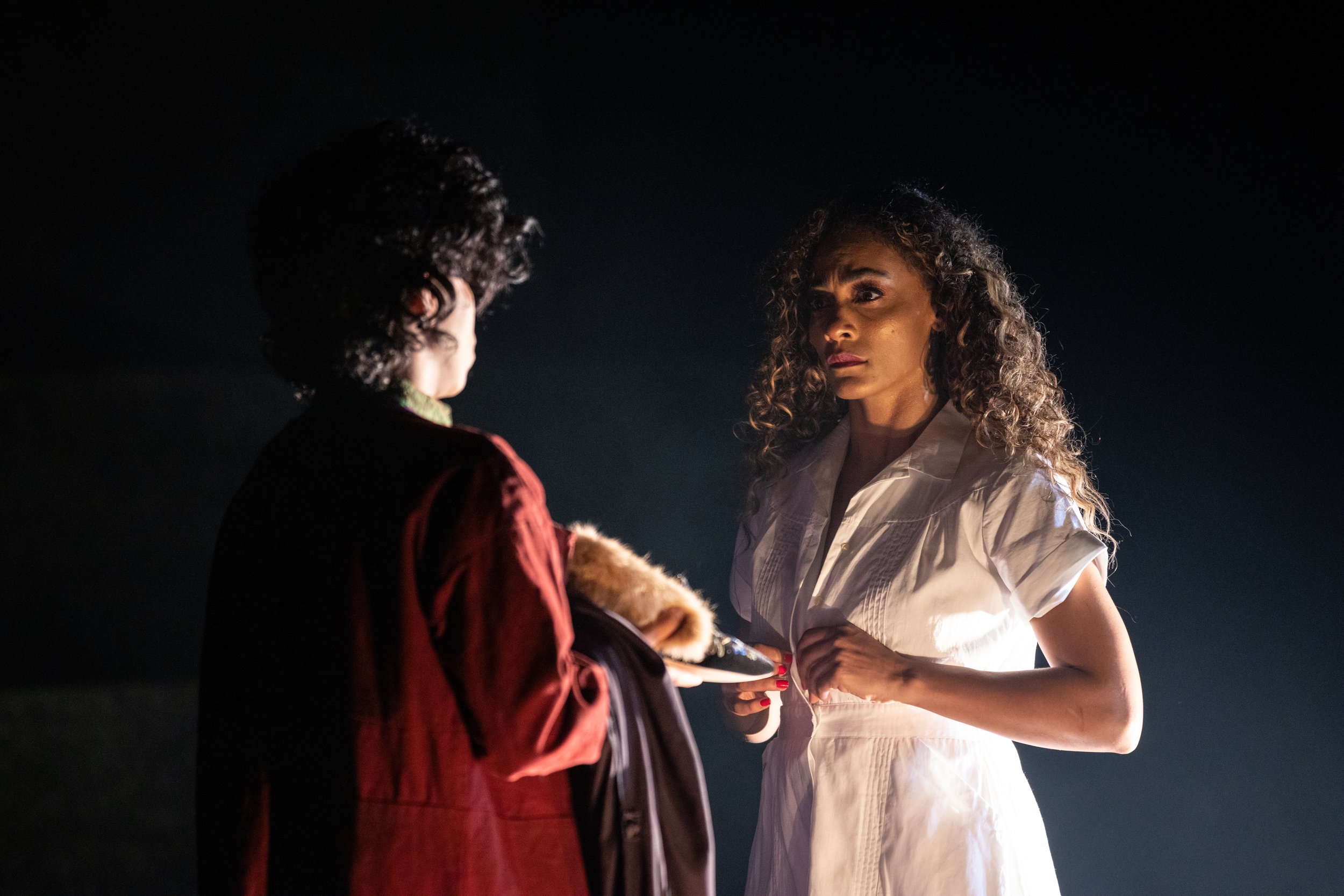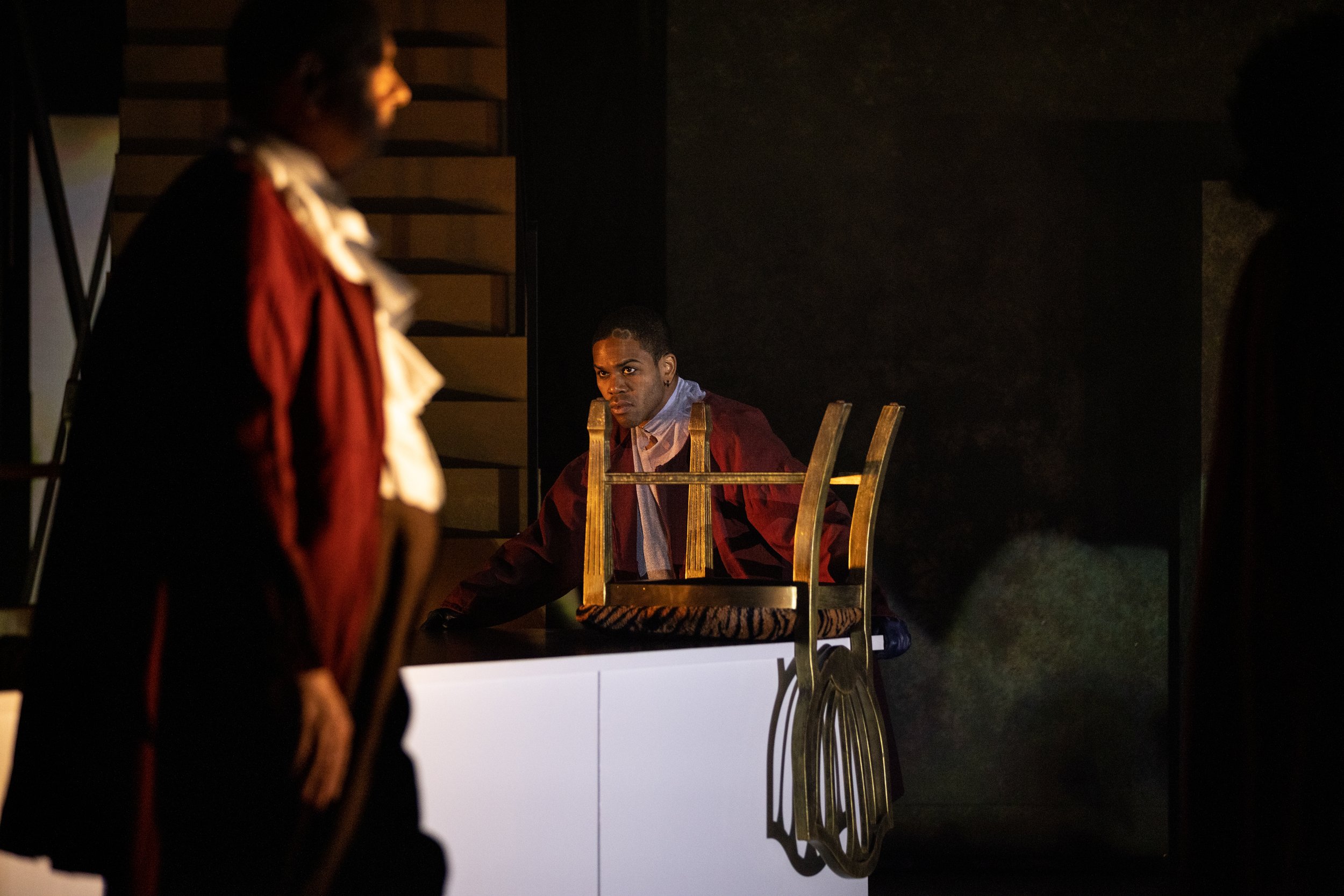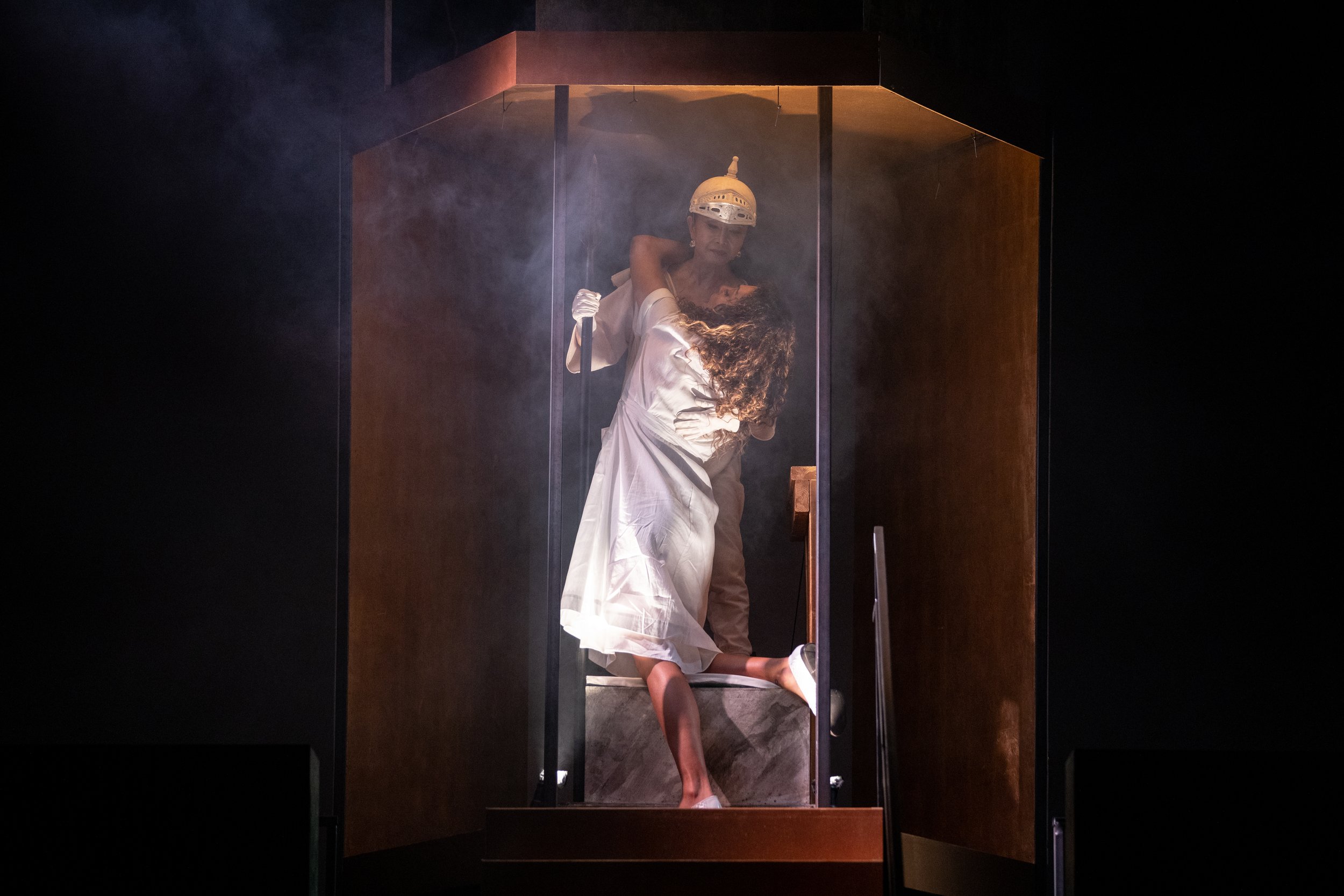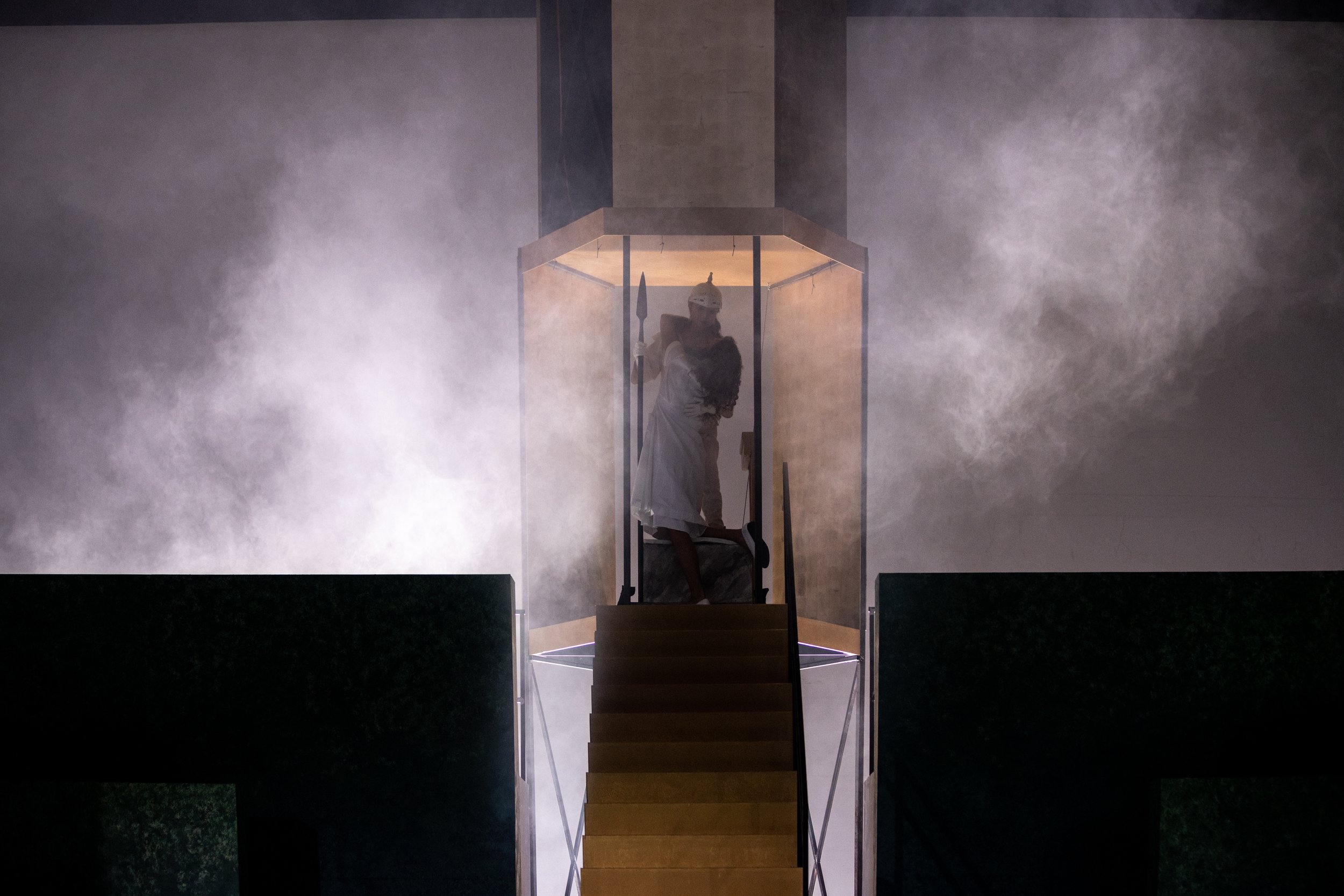DOM JUAN
BY MOLIÈRE
“[Like something that] reaches out across the centuries and punches you in the throat.”
Full review HERE
Act IV
From Left: Zuzanna Szadkowski (Sganarelle), Pauli Pontrelli (Violet), Alok Tewari (Dom Luis), Amelia Workman (Dom Juan)
Photo: Maria Baranova
Bard Fisher Center SummerScape Commission/World Premiere Production
New translation by Sylvaine Guyot and Gideon Lester
Conceived and directed by Ashley Tata
June 24 – July 17, 2022
A glittering and ferocious study of lust and power, Molière’s portrait of the libertine Dom Juan combines slapstick comedy with the taut psychology of a thriller. In this bold new adaptation, director Ashley Tata (whose digital production of Mad Forest astonished Fisher Center audiences in 2020) sets the story in a fantasy world where 17th-century France meets late-1970s America, raising pertinent questions about class, faith and gender. Casting both the titular libertine and her sidekick as women, Tata’s production literally recasts this subversive and brilliant tragicomedy in a contemporary light—celebrating Molière’s 400th anniversary with a Dom Juan for the 21st century.
Original Music by Paul Pinto
Choreography by Dan Safer
Intimacy and Fight Direction by Cha Ramos
Scenic Design by Afsoon Pajoufar
Costume Design by Ásta Bennie Hostetter
Lighting Design by Cha See
Sound Design by Chad Raines
Video Design by Lisa Renkel
Hair and Makeup Design by Fre Howard / Faces by Fre
Casting by Taylor Williams
Act III
From Left: Pauli Pontrelli (Matty), Amelia Workman (Dom Juan), Kristin Harvey (Charlotte)
Photo: Maria Baranova
CAST
Statue of the Commander - Ako*
Elver - Jordan Bellow*
Pierrot/Alonso - Roger Casey*
Carla/Charlotte - Kirsten Harvey*
Gusman/Matty/Violet - Pauli Pontrelli*
Sganarelle - Zuzanna Szadkowski*
Louis - Alok Tewari*
A Poor Man/Mr. Sunday - Tony Torn*
Dom Juan - Amelia Workman*
The Dom Juans
Guitar - Magdalena Abrego
Guitar/La Ramée - Katie Battistoni
Drums - Amy O
Something in between.
From Left (back): Tony Torn, Alok Tewari, Jordan Bellows, Kirsten Harvey
From Left (front): Ako, Pauli Pontrelli, Roger Casey
Photo: Maria Baranova
Production Stage Manager - Michael D. Domue*
Assistant Stage Manager - Samantha L. Robbins*
Production Assistant - Lilian McGrail
Assistant Director - Susanna Jaramillo
Assistant Scenic Designers - Yi-Hsuan (Ant) Ma and Aoshuang Zhang
Assistant Costume Designers - Susanne Houstle and Julia Kulaya
Associate Lighting Designer - Charlotte McPherson
Assistant Sound Designer - Elliot Yokum
Associate Projection Designer - Brian Pacelli
Assistant Projection Designer - Taylor Gordon
Projection Design Intern - Rachel Shatzkin
Animation and Concept Art - Larena Schwarzzenberger and Wayne Bryant
Assistant Hair and Makeup Designers - Tiffany Collins and Stacey McBride
Hair and Makeup Junior Assistant - Vala Keck
Dance Captain - Kirsten Harvey*
Fight Captain - Roger Casey*
Act V
Amelia Workman (Dom Juan)
Photo: Maria Baranova
WELCOME TO (Y)OUR DOM JUAN
The curtain will reveal a work that was created almost 400 years ago by a company who performed plays written specifically for them by Molière in direct response to the times they were living through. Dom Juan was performed only a handful of times before it was shut down, never to be performed again in Molière’s lifetime. It has been transmitted to us from performer to performer, edition to edition, production to production, in French or in translation, from Louis XIV’s France to these United States of America. Molière’s Dom Juan is, itself, a kind of translation; the character of a man who serially seduces women, leaves them, and is consequently punished with a trip to hell was mythologized a few decades earlier by Spanish and Italian writers and would continue to be iterated upon including by Da Ponte and Mozart with Don Giovanni.
This is the third time I’ve worked on this material in the past 10 years. It is a play that self- consciously celebrates several forms of theater including commedia dell’arte, neoclassical tragedy, and morality plays. Embedded within this material are the physical actions and rhythms of the performers who have contributed to its realization over centuries. The work demands monstrous theater-making appetites from every member of the company that manifests it. After the pandemic imposed two years of disembodied theater practice upon us, these factors seemed like the ideal way to remember what it is to make theater. And it is a play with the kind of ambiguity that poses questions relevant to the time of its realization. In a violent and fearful society where a perceived insult can lead to a legally pardoned death, how is it possible to be a moral person? When the truth of your being is deemed a threat to the status quo does an individual owe responsibility to their society? One of the thrills of watching this play unfold is to see how close to the moral limit Dom Juan will go. Since we so well understand the ways men in power bound across the line of moral limits, what was more compelling to me was the story of a female-identified assistant who works for a female-identified boss who commits morally ambiguous acts. With this reading in mind I found that the danger facing Dom Juan became more palpable. Through the lens of two women, themes of intimacy, community, faith, institutions, honesty, gender performance, and manipulations of truth and power electrified through the text in a way that seemed likely to spark an audience in this fraught summer of 2022.
Having the far-too-rare opportunity to work with translators on a new version of the text allowed us to truly perform this experiment in gender play. And the work of the cast and company to embody these characters and bring this fantasy world to vibrant life is, hopefully, a welcome invitation to forget what you think you know about Don Juan (as the play is typically known in English) and allow yourself to be seduced in new, unexpected ways by our Dom Juan.
- Ashley K Tata
06.23.22
Photos: Maria Baranova



